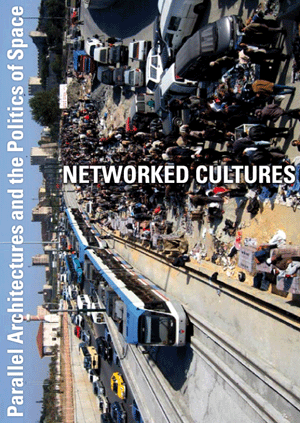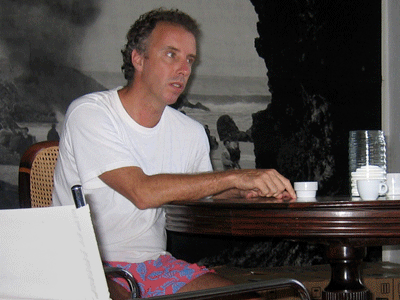_loginregistrieren_database_5 Factories - Worker Control in Venezuela Dario Azzellini & Oliver Ressler _ALMOSTREAL ECF _AnArchitektur Jesko Fezer _Arizona Road Azra Aksamija _Balkan Konsulat rotor _Bata-ville: We are not afraid of the future Nina Pope + Karen Guthrie / www.somewhere.org.uk _Black Benz Race krcf in collaboration with Felix Stalder, Arben Gecaj, Faton Topalli and Osman Osmani _Black Sea Files Ursula Biemann _Camp La Jolla Military ParkOwen Mundy _CHANGE REALITY: Renaming the Streets of Zagreb REINIGUNGSGESELLSCHAFT _Conceptual Paradise. There is a place for sophistication Stefan Roemer _de-regulation Irit Rogoff, Kutlug Ataman, Stefan Roemer_news ____________Bloomberg SPACE, London ____________Kumu Art Museum Tallinn ____________Open Space, Open Systems - Vienna ____________CAA 2011 Conference, New York ____________Forum Stadtpark, Graz ____________Symposium, Istanbul ____________lungomare, Bozen/Bolzano ____________Metropolis Biennale 2007-17, Copenhagen ____________new publication available now ____________Mestna Galerija, Ljubljana ____________Livestream of Networked Cultures documentary ____________ |
_ConversationsHelmut Batista
Helmut Batista
PM/HM: As an artist and curator who has been living and working in Rio de Janeiro for many years, how do you feel about the current interest in Brazilian favelas in terms of social and political self-organisation? Helmut Batista: For me the favelas are just another part of the city, like Copacabana Beach. But unfortunately they are not in fact really a part of it. You won’t find them on maps, even today, in 2007. I think most people who are living in these places nowadays don’t think of themselves as living in a favela but feel they live in a community. There are six hundred favelas in Rio alone. There are “bad” and “good” favelas; some even have banks and McDonalds. Some have no violence at all and others are really violent. The police can’t go into many of them; there are only a few where they can. So there’s a wide range of concepts for communities and small towns that organise themselves. The favela “Rio das Pedras” is one of the best examples of self-organisation. And yet the body that keeps it under control are militia made up of ex-policemen and they’ve taken justice into their own hands. They’re now building themselves up into a sort of paramilitary force like in Colombia, though in a very different format. In these places everybody pays a couple of reais per month for a variety of services, for example, to have the post delivered to their homes. Often there are no street names, so the postman has to take the post to the main community headquarters and from there people have to distribute it themselves. And although this system is very cheap, it reverses the concept of everything. It’s a very ambiguous way of thinking of the city. You’re part and you’re not part of it. Then there are things like electricity: the public electricity company charges a lot in Brazil; I’ve read we pay more than people do in France or Germany. People in the favelas use electricity from the system without paying. There’s something like an unconscious system of wealth distribution: rich people pay large amounts to cover services to almost everyone else; poor people have to siphon off electricity and water just for the sake of surviving. They also don’t pay any kind of taxes, for instance, property taxes. This has a big influence on certain aspects of the favelas and how they’re built. If you don’t pay for electricity, you build your house just with a hole for the air conditioner. So most of these places are very dark and the streets are very narrow, because they don’t really need daylight. What’s more, if you have an air conditioner, you want to keep everything closed. So the fact that electricity is “free” makes the architecture completely different. The buildings are very close to each other and often have no windows or natural ventilation. If people suddenly had to pay for electricity, most favelas would turn into uninhabitable places – they’d be too hot to live in. PM/HM: In one of your recent curatorial projects you invite other artists to travel with you across South America. Your car becomes a place of art production. Apart from that, it also exposes the role of intimacy in networking processes. What do you expect from these kinds of encounters? Helmut Batista: I’m interested in building up networks. I think the only way for changes to happen in places like Rio de Janeiro is by establishing exchanges between international artists. I started the ROAD project with this intention in mind. Each time I make a trip I invite an artist. Am I a curator? Actually, I don’t know what I am. I invite people whose work I like and with whom I can imagine having a good personal relationship. These trips are very intimate and we often stay longer than a month together, night and day. We start the trip with the intention of doing something that might seem like work; this does not necessarily mean that we’ll end up working. Then we go from one place to the next and see what happens. But it’s not only about geographical dislocation. It’s also about how we react to new situations. It’s about discussions you don’t usually have during your normal life and working time. It’s not about holding meetings for two hours in a coffee bar with a curator. We are together twenty-four hours a day and share all our experiences. Meeting different people while travelling is surely a big part of it all and makes everything more possible and uncontrollable. It’s this uncontrollable aspect that motivates us to carry out this project. You just don’t know what you’ll find and whom you’ll talk to. So creating a network is just a side effect that happens pretty naturally. An important part of these trips is the desire to build up a South American residency programme and network for research. Though not just for visual art, but for research in general. So far we have made six trips. My car was confiscated on my fifth trip with Gabriel Lester, at the border between Peru and Ecuador. Paper problems and corrupt police made me lose the car and from that moment on I had to rethink everything. The last project, Peru to Medellin, was done with the help of MED 07 (encuentros de Medellin) with artists Julia Rometti and Victor Costales and a rented car. In May 2007, a year after the confiscation and a year of struggling with Peruvian authorities, I received notice that there was nothing to be done and my car was now property of the Peruvian government. It’s funny and stupid at the same time. It was a FIAT, but there are no FIATs in Peru, and the car was in urgent need of repairs. So I guess it will just rust away in some depot in Peru. Since beginning in 2004, we’ve been to Argentina, Chile, Bolivia, Peru and Ecuador. I always leave my car wherever we stop and then just fly back with the artist. Until now only two of the artists have actually done a piece: João Modé, whose worked we showed at the Rio Film Festival in 2006; and during the last trip (Peru to Medellin), we finished up a project with Julia Rometti. I’m not interested in having an agenda. It’s more about the experience we have together. There’s no concept for an exhibition at the end. I just do a lot of kilometres and take a look at what’s happening at these places and try to build up connections. We have already succeeded in bringing some Argentineans, Chileans and Colombians to Rio. Now some Peruvians are coming. So it’s a long, steady and gentle work-in-progress. I call it the mobile residency programme, actually. PM/HM: The networks you develop are critically informed by the creativity of personal friendships, while at the same time linking up with institutional settings and their demands. How do you manage to negotiate the tension between these different ends? Helmut Batista: In Rio things have to be organic. Nothing happens here if you don’t establish friendly connections. Actually, that’s how I do things, too. On these trips I’m not interested in just putting together shows. Primarily I’m interested in getting to know the right people in a personal sense. If the work is also nice, we have a perfect blend. Coming back to the institutional level: I guess I have to define myself as a curator. Though this is just terminology. For me the question here is the challenge to produce something in different contexts. I invite somebody to do this and then we write all these bureaucratic papers to foundations so that they’ll pay for it or at least help us. The art system just enables you to meet the right people and raise some money. Things move very fast nowadays. Artists and curators hop from one exhibition to the other in a matter of a few days, even hours. What we are doing here is pretty much the opposite. There’s so much time for real experience. This is a luxury compared to the way things are done in the institutional world of galleries and museums. After realising six projects in three years, I think it’s all coming together to form something that might be called one project; something that stands on its own. Doing this is also a political gesture, and the gesture itself is part of the dislocation and development of networks that is so important. The question now is: Who’s going to pay for my lost car? No foundation will do that, I guess.
|
_broadcasts_conversations+ Ana Dzokic and Marc Neelen+ Ayreen Anastas and Rene Gabri + atelier d'architecture autogérée (aaa) + Asya Filippova + Sophie Hope and Sarah Carrington + Branca Curcic + Christoph Schaefer + Campement Urbain + Claudia Zanfi + Despoina Sevasti and Poka-Yio + Erden Kosova + Helmut Batista _textsRadio as Spatial Practiceby: Paulo Tavares Survival Kits: Artistic Responses to Globalizationby: Marga van Mechelen What Ever Happened to Cultural Democracy?by: Sophie Hope I don't know how to explain ...by: Anca Gyemant Trading Placesby: Peter Moertenboeck & Helge Mooshammer Milosevic as Architectby: Srdjan Jovanovic Weiss When the Unavoidable Knocks at the Door ...by: Gulsen Bal Tracing Translocality: The BlackBenz Raceby: Felix Stalder travelling lexicon towards a global positioning systemby: Celine Condorelli |
